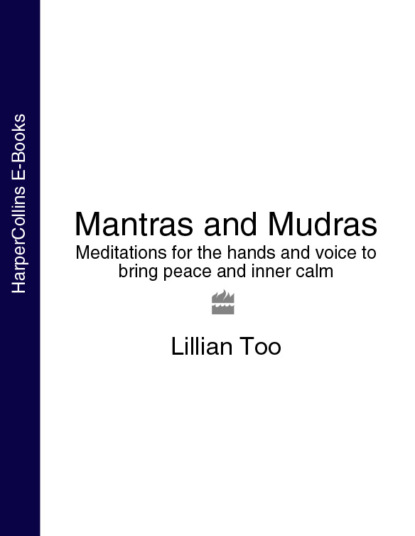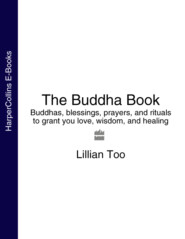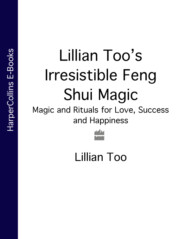По всем вопросам обращайтесь на: info@litportal.ru
(©) 2003-2024.
✖
Mantras and Mudras: Meditations for the hands and voice to bring peace and inner calm
Автор
Год написания книги
2018
Настройки чтения
Размер шрифта
Высота строк
Поля
Saying this refuge mantra seven times each morning when you wake up, and seven times at night before you sleep, brings you under the care of the Buddhas; if you have a guru, it brings you under the care of the guru. This simple mantra is extremely powerful because it plants the imprint of taking refuge in the Guru-Triple Gem.
HOMAGE MANTRA TO THE BUDDHA
You can say this longer homage mantra to the Buddha, and incorporate a simple “receiving blessing” visualization. Chant this mantra three times each morning:
LAMA TON PA CHOM DEN DAY
DE ZHIN SHEG PA DRA CHOM PA
YANG DAG PAR DZOG PAY SANG GYAY
PEL GYEL WA, SHAKYA TUB PA LA
CHAG TSEL ZHING, KYAB SU CHI WO
CHO DO JIN GYI LAB TU SOL
TRANSLATION:
To the founder, the endowed transcendent destroyer, the one gone beyond, the foe destroyer, the completely perfect, fully awakened being, the subduer from the Shakya clan, I prostrate. Please grant me your blessings.
As you chant this mantra, feel the presence of the Buddha and take refuge in him. Visualize his body as golden light. He is seated in the Vajra position; his face is very beautiful, and his gaze is compassionate. Rays of light emanate from each pore of the Buddha’s body and reach every corner of the world. Feel the rays waft completely over you, entering the top of your head and filling your whole body. Feel very blessed.
Shakyamuni Buddha, or historical Buddha.
Making prostrations (#ulink_e2caac4d-1640-5ce1-9f02-01115d1c7523)
One of the first things that Rinpoche taught me when I met him in Bodhgaya, India, was how beneficial it was to learn how to make prostrations to the holy objects, and especially to images of Buddha. Rinpoche said, “The merit is greater than all the grains of sand on the bed of the river Ganga . . .”
Rinpoche explained that because most of us have minds that are not purified of karmic obstacles, even if numberless Buddhas were to come in front of us, we would not be able to “see” the aspect of the Buddha, or that which is the pure aspect. We can only see the image of the Buddha shown as in a painting, or as a statue. So when we prostrate to an image of Buddha, in our minds and our hearts we are prostrating to Buddha. The image helps us to visualize. Those of us who have the good karma to meet a perfectly qualified guru can see Buddha emanating as an ordinary being who appears in the form of a humble monk and teacher. This explains why Tibetan Buddhists see His Holiness the Dalai Lama as the Buddha of Compassion. Although he takes the form of an ordinary human being, those who revere him see him as an emanation of the Buddha Chenrezig, the Compassionate Buddha (see page 34). So making prostrations to images of the Buddhas (or holy objects) and to our precious gurus is an act of reverence that precedes all prayers. Making prostrations helps the mind to develop genuine humility, and is a perfect way of overcoming arrogance and pride.
PROSTRATION MANTRA
Prostrate three times while reciting the mantra below. This multiplies it one thousand times. Prostrations purify the negative karma of the body. Verbally reciting mantras exalts the Buddha, purifying the negative karma of speech. The mental action of remembering the supreme power of the Buddha purifies the negative karma of the mind, thereby arousing faith.
OM NAMO MANJUSHRIYE
NAMA SUSHRIYE
NAMA UTTAMA SHRIYE SVAHA
PROSTRATION MUDRA
If for some reason you find it difficult to make the full-length or even the short prostrations (see opposite), you can visualize yourself prostrating while reciting the mantra. Use your hands to make the Prostration mudra. This mudra is almost universally accepted as the Prayer mudra, symbolizing reverence and respect. Fold your palms together upright, leaving some space in between. Bend the two thumbs inward to signify that the space between the palms is filled with offerings. This makes the mudra more auspicious.
The Prayer mudra, or Namaskara mudra. This is also the Prostration mudra.
Whether a life situation is wonderful or not depends on the way your mind perceives and interprets it. You can choose to label an experience “wonderful” or “a problem.” It depends completely upon your mind, upon your interpretation.
KYABJE LAMA ZOPA RINPOCHE
HOW TO MAKE PROSTRATIONS
There is a short prostration and a full-length prostration. Here is how to practice each one.
First, calm your mind and generate devotional thoughts. Think, “Reverently I prostrate with my body, speech, and mind, and take refuge in the Guru-Triple Gem – Buddha, Dharma, and Sangha.” Next, place your palms together, touching the top of your head; then bring them down to touch your forehead; then down again to touch your throat; and then touch your heart (see a, b, c, and d on page 8). Then bend down. Kneel on the floor and place your hands, palms down, on the floor (see e). If you are making the short prostration, lower your forehead until it touches the ground, and then get up. Repeat three times.
For the long prostration, stretch yourself full length on the floor after you have lowered yourself (see f). Raise your palms above your head (see g) and then get up (see h). Do not stay too long on the floor, and make your prostrations with focused concentration. Think reverential thoughts and dedicate the merit created to your own spiritual awakening. Keep your feet together and your fingers closed as you prostrate. The merit gained is simply enormous. As Rinpoche would say, “the merit is like sky!”
Generating motivation (#ulink_d48d8d5c-b043-5be0-9c3e-3183ab1f7e40)
The sun of real happiness shines in your life when you start to cherish others.
KYABJE LAMA ZOPA RINPOCHE
The chanting of mantras becomes extremely powerful when it is practiced with the pure motivation of helping or benefiting others. This altruistic intention develops what Buddhists refer to as “bodhichitta,” or the spontaneous kind heart. When you chant this mantra three times to generate powerful motivation before any kind act or prayers, the mantra becomes very meaningful:
DAG DANG ZHEN DON DRUP LAY DU
DAG GI JANG CHUB SEM KYAY DO
TRANSLATION:
To accomplish my own and others’ aims I generate the mind seeking Enlightenment.
Alternatively, you can meditate on the Four Immeasurable Thoughts – your heartfelt wishes for all beings:
Immeasurable equanimity
May all beings abide in equanimity, free of hatred, anger, and attachment
Immeasurable compassion
May all beings be free of sufferings and the causes of suffering
Immeasurable love
May all beings have happiness and the causes of happiness
Immeasurable joy
May all beings never lose the joys of high rebirth
And may I cause all of these things to happen.
The meditation on the Four Immeasurable Thoughts is considered to be a classic in masterful motivations. Meditate on it.
This is the image of the Dharmachakra, which signifies the teachings of the Buddha. It is placed at the top of Mandala Offerings and is most auspicious.










